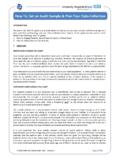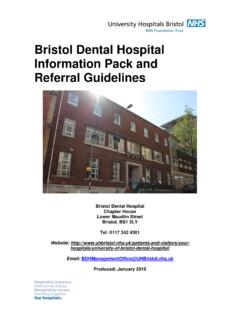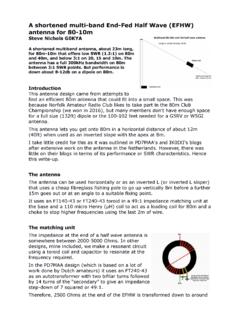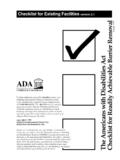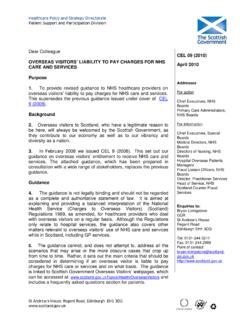Transcription of POLICY ON THE USE OF MOBILE COMMUNICATION
1 UNIVERSITY HOSPITALS BRISTOL NHS FOUNDATION TRUST University Hospitals Bristol NHS Foundation Trust POLICY ON THE USE OF MOBILE COMMUNICATION EQUIPMENT IN PATIENT AREAS Date of Issue: 8 May 2012 Previous Version: 20 November 2006 Authors: John Wigmore, Trust Telecoms Manager Mandy Gemmell, MEMO Approved by: SDG 19 March 2012 Review Date: March 2015 UNIVERSITY HOSPITALS BRISTOL NHS FOUNDATION TRUST POLICY on Use of MOBILE COMMUNICATION Equipment in Patient Areas 1. EXECUTIVE SUMMARY This POLICY aims to manage the growing use of personal COMMUNICATION devices by patients, visitors and staff while ensuring patients and staff are not put at risk.
2 It replaces the previous version of the POLICY and relaxes many of the restrictions that were in that POLICY , and reflects the latest Department of Health Guidance issued on 6th January 2009. This POLICY reflects the guidance on allowing patients the widest possible use of MOBILE phones in hospitals where such use does not represent a threat to: Patients own safety, or that of others The operation of electrically sensitive medical devices in critical care situations The level of privacy and dignity that must be the hallmarks of all NHS care The POLICY also takes into account legal considerations regarding.
3 Data protection Patient privacy and dignity Patient confidentiality Safeguarding children and vulnerable adults Nuisance Health & Safety risks The POLICY further recognizes that the use of MOBILE phones with a camera facility can constitute a considerable risk. These risks can be identified as: Possible breach of medical confidentiality Possible intrusion into patients private life Possible contravention of Data Protection Act 1998 and breach of patient confidentiality Possible risk to safety and welfare of children in contravention of The Children Act 2004 Cause of nuisance to staff other patients.
4 UNIVERSITY HOSPITALS BRISTOL NHS FOUNDATION TRUST 2. DEFINITIONS MOBILE COMMUNICATION equipment can be grouped according to their potential to cause EMI; the POLICY is related to the risk of interference of these different types of COMMUNICATION device: Risk of interference Type of COMMUNICATION system High Analogue emergency service radios Private business radios (PBRs) and PMR446, porters' and maintenance staff radios (two-way radios). Medium/Low MOBILE phones TETRA (Terrestrial Trunked Radio System) Laptop computers, palmtops and gaming devices fitted with GPRS (General Packet Radio System) and/or 3G HIPERLAN (High Performance Radio Local Area Networks) Low Cordless telephones (including DECT, Digital European Cordless Technology), and computer radio network systems except HIPERLAN and GPRS RLAN (Radio Local Area Networks) systems and Bluetooth 2a.
5 RATIONALE Some restrictions are necessary to: 1. Minimise the risk of breach of privacy/confidentiality 2. Address the nuisance/distraction effect to patients and/or staff. 3. Minimise the risk of breaching the Data Protection Act 4. Minimise the risk of interference with critical medical equipment These restrictions relate directly to ensuring trust compliance with the Care Quality Commissions essential standards & outcomes : Outcome 4: Care and welfare of people who use services People should get safe and appropriate care that meets their needs and supports their rights.
6 Outcome 11: Safety, availability and suitability of equipment People should be safe from harm from unsafe or unsuitable equipment. UNIVERSITY HOSPITALS BRISTOL NHS FOUNDATION TRUST Further background to the evidence and issues is at Appendix 1. 3. POLICY STATEMENTS 3a. High Risk Devices Emergency Services Radio Handsets These handsets are the most likely to cause EMI because of their high power transmitters and lower operating frequencies. However, any likelihood of EMI must be balanced against benefits of these handsets in emergency situations when lives may be at risk.
7 In the event of any disturbance of equipment function or equipment failure occurring in the vicinity of radio handset use, the possibility of EMI must always be considered and MEMO consulted. Emergency services personnel carrying these handsets must be aware of the risk of EMI and should not use these devices inside the hospital for routine COMMUNICATION . Any use within the Trust should only be made after consideration that the benefits outweigh the significant risk of EMI. In such instances, emergency services personnel using high-risk radio handsets should move well away from high dependency patient areas whenever it is practical to do so.
8 Security Radio Handsets [and including radios used by porters and maintenance staff ] These are the only devices with a high risk of EMI, regularly used by hospital staff. Their use is necessitated to reduce health and safety risks to staff. The use of radio handsets by trust staff should be with the knowledge that it is possible for these handsets to cause interference with medical devices. In the event of any disturbance of equipment function or equipment failure in close proximity to these handsets this must be recorded as a clinical incident and both devices investigated by MEMO 3b.
9 Medium Risk Devices MOBILE Phones In the event of any disturbance of equipment function occurring in the vicinity of MOBILE phone use, the possibility of EMI must always be considered and MEMO consulted. The use of MOBILE phones within this POLICY is deemed to include the use of that device for the purpose of sending or receiving voice calls, SMS (text) messaging, e-mails and all other data transfer. This includes MOBILE phones, smartphones, iPads and tablet portable computers. UNIVERSITY HOSPITALS BRISTOL NHS FOUNDATION TRUST For the purpose of this POLICY all areas within the Trust will fall within the following 3 categories: Category 1 Non Clinical areas/low risk patient areas ( ward day rooms, clinic waiting areas, corridors, reception areas), where MOBILE phones can be used by staff, patients and visitors alike.
10 Category 2 Clinical Patient areas ( general wards and departments) where MOBILE phones can be used by staff, patients and visitors, but may be subject to local restrictions if their use is deemed to be affecting patient care, dignity or confidentiality. Category 3 Safety Critical Patient areas ( Intensive Care/Coronary Care Units, Operating Theatres etc) where the use of MOBILE phones by patients and visitors are prohibited, but may be used by clinical staff with extreme caution particularly if within 1m of sensitive medical devices associated with life support. Patients and visitors MOBILE phones must be switched off in these areas.



